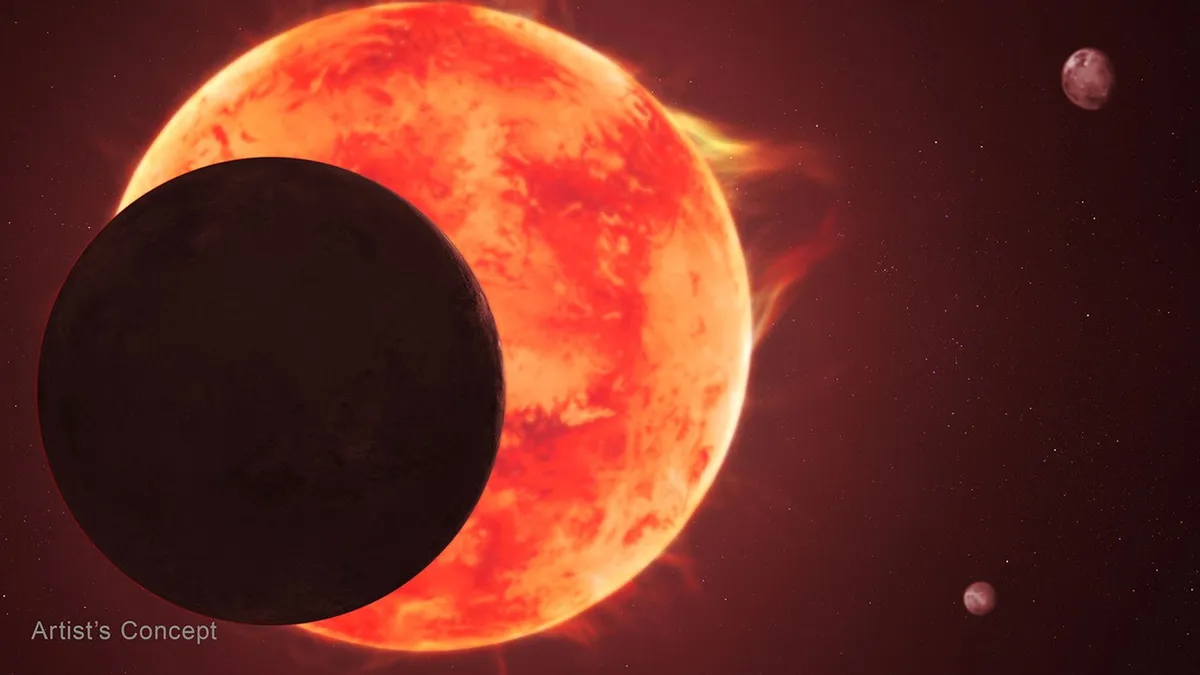
The exoplanet TRAPPIST-1 d has captured the attention of astronomers searching for potentially habitable worlds beyond our solar system. This intriguing planet is similar in size to Earth, rocky, and orbits within a region around its star where liquid water could theoretically exist. However, a recent study utilizing data from NASA’s James Webb Space Telescope indicates that TRAPPIST-1 d does not possess an Earth-like atmosphere.
“Ultimately, we want to know if an environment akin to what we enjoy on Earth can exist elsewhere, and under what conditions,” said Caroline Piaulet-Ghorayeb, the lead author of the study and a researcher at the University of Chicago and the Trottier Institute for Research on Exoplanets (IREx) at Université de Montréal. The findings were published in The Astrophysical Journal.
The TRAPPIST-1 system, located 40 light-years away, gained recognition in 2017 as the record-holder for the most Earth-sized rocky planets orbiting a single star. This discovery was made possible by data collected from NASA’s retired Spitzer Space Telescope and several other observatories. The host star, a dim and relatively cold red dwarf, defines a “habitable zone” or “Goldilocks zone,” where temperatures may permit the presence of liquid surface water. In this system, TRAPPIST-1 d is the third planet from its star, situated much closer than Earth is to the Sun, at only 2 percent of our solar system’s distance.
Interestingly, TRAPPIST-1 d completes its orbit in a mere four Earth days, making it a unique case for study.
The advanced capabilities of Webb’s NIRSpec (Near-Infrared Spectrograph) instrument did not detect key molecules found in Earth’s atmosphere, such as water, methane, or carbon dioxide on TRAPPIST-1 d. However, Piaulet-Ghorayeb suggested several intriguing possibilities for future exploration. “There are a few potential reasons why we don’t detect an atmosphere around TRAPPIST-1 d,” she explained. “It could have an extremely thin atmosphere, akin to Mars, or thick, high-altitude clouds blocking our detection of specific atmospheric signatures, similar to Venus. Alternatively, it might be a barren rock with no atmosphere at all.”
Regardless of its atmospheric status, TRAPPIST-1 d faces significant challenges as a planet orbiting a red dwarf star. The host star, TRAPPIST-1, is known for its volatility and often emits high-energy radiation that could strip away the atmospheres of its closely orbiting planets. Despite these harsh conditions, scientists remain motivated to search for atmospheric signatures on the TRAPPIST-1 planets, since red dwarf stars are the most prevalent type in our galaxy. If planets can maintain an atmosphere under the intense radiation from their host star, it raises the question of the potential for life.
Webb's observations of the outer TRAPPIST-1 planets are ongoing, revealing both potential and challenges. As Björn Benneke of IREx at Université de Montréal noted, planets e, f, g, and h might have a better chance of retaining atmospheres due to their greater distance from the energetic eruptions of their star. However, this distance also complicates the detection of atmospheric signatures, even with Webb’s advanced infrared technology.
“All hope is not lost for atmospheres around the TRAPPIST-1 planets,” Piaulet-Ghorayeb reassured. “While we didn’t find a significant atmospheric signature at planet d, there’s still potential for the outer planets to retain substantial water and other atmospheric components.”
As NASA leads the charge in the quest for extraterrestrial life, understanding which planets can hold onto their atmospheres is crucial. “NASA’s James Webb Space Telescope has expanded our capabilities for studying exoplanet atmospheres further than ever before, allowing us to confirm theories about potentially habitable planets,” said Shawn Domagal-Goldman, acting director of the Astrophysics Division at NASA Headquarters in Washington. “This foundational work will pave the way for future missions, such as NASA’s Habitable Worlds Observatory, to address the fundamental question: Are we alone?”
The James Webb Space Telescope stands as the premier space science observatory, solving mysteries within our solar system while investigating distant worlds and the origins of our universe. To learn more about Webb and its groundbreaking work, visit NASA’s official site.